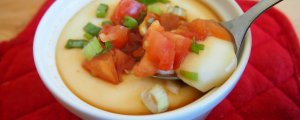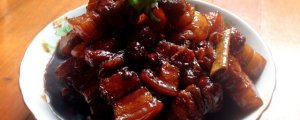
Steamed bun
(77004 views)
Cooking ingredients
Cooking Steps

Step1:Noodle 1, yeast - the yeast I use is Angel yeast powder bought by the supermarket. It's 5g. It's easy to use. The quantity of yeast is relative rather than absolute. It depends on the temperature and speed of the dough environment. Before using the acid mother, melt it in warm water and let it stand for 5 minutes. The quantity of yeast can be more if the environment is cool or you want to hair faster. Under normal temperature, 5g flour per 500g is enough. 2. Water quantity - how much water is needed for noodles? Actually, it can be put in several times. It's better to ferment faster with warm water. The noodles of steamed bread should be hard. It's 500 grams of flour and 250 grams of water. The meat bun's face is a little more Microsoft. It's easy to seal after filling; it's not easy to knead the dough at the beginning. You can knead the dough into a shape and leave it on the back cover for 10 minutes. Wait for the water and flour to fully blend and then knead again. It's easy to knead into a smooth dough.

Step2:Hair noodle 1. One time fermentation - put the dough into a basin, cover the basin or keep fresh film, and then make one-time fermentation. Dough ferments easily in hot weather. Generally ferment it to twice the size of the original dough. 2. Shaping - pour out the dough and put it on the panel. Knead it for a while to let out more air. The smaller and even section holes after the dough is cut, the better. In this way, the dough will be smoother. After steaming out, the surface of the steamed bread will be smoother. The same is true for stuffed steamed buns. Then, you can make steamed bread or steamed bun and put them into the steamer. 3. Second fermentation - before steaming, it is better to carry out second fermentation. Leave the green body in the steamer for about 20 minutes and 30 minutes. It is recommended not to neglect this step. Steamed buns or steamed buns, which have been fermented twice, will surely be better than lacking this step. In hot weather, the steamer is filled with cold water. Because the temperature is high, it is easy to ferment; in cold weather, the steamer is filled with hot water, which is more conducive to secondary fermentation.

Step3:The amount of water put in the steaming pan is the middle of the curtain and the bottom of the pan or a little bit higher. Too much water will easily cause the bottom of the lower layer of steamed bread to be scalded and sticky. Too little water, not enough steam will dry the pan and the steamed bread will die. Before putting the curtain into the green, pour a little oil on it and wipe it with your hand or brush; use it all the wa

Step4:
Cooking tips:Summary-1. The fermentation time depends on the temperature. It is shorter in summer and longer in winter. When the dough volume increases to two or three times the original, it's OK. 2. Test whether the fermentation is successful. Use your fingers to dip some flour. Poke holes in the dough. If the holes rebound immediately, it means that the fermentation is not enough and still needs to be fermented; if the surface of the dough collapses, it means that the fermentation is excessive. The dough will have sour taste. It can be neutralized with alkali, such as baking soda. 3. Check the inside of the dough. There will be honeycomb holes. 4. After the pasta is put into the pot, it needs to be steamed over high fire. The time of steaming must be sufficient. The time will be determined according to the size of the pasta. After the fire is turned off, it must be steamed for three or five minutes. The pot cannot be opened immediately. There are skills in making delicious dishes.
 Chinese Food
Chinese Food












